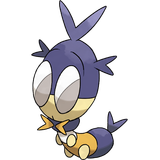Search Results
7/12/2025, 12:52:59 AM
>>57991252
Serious answer:
-Check out the sticky on our /ic/ board
-Start cheap: pencils, liners, erasers, ruler and a sketchbook
-Start working through the exercises in Keys to Drawing (you can probably find the PDF for free online). Obviously, for the exercises you don't have to use IRL models, you can grab photo references off Google
-After you get through a few chapters of the above, start working through Fun with a Pencil in parallel
-You can then watch some YouTube channels for extra guidance, like Pikat, Marc Brunet, Proko, Lines Sensei, etc
-Once you've worked through a chunk of the two books, you can consider going digital: buy a low-cost screenless tablet (these are cheap but have a BIG learning curve due to the hand-eye coordination) and learn to use Krita (digital art programs have lots of bells and whistles, so this also has a learning curve)
-Realize that improvement is not perfectly linear, you will alternate between shit and acceptable at the start
-The important thing is being a good self critic: are your proportions off, is the perspective wonky, is the shading unrealistic, is the lineart shaky, etc. Because then you know what to grind. Learn how to compare your work to professional stuff (without beating yourself up, just notice the differences objectively)
Serious answer:
-Check out the sticky on our /ic/ board
-Start cheap: pencils, liners, erasers, ruler and a sketchbook
-Start working through the exercises in Keys to Drawing (you can probably find the PDF for free online). Obviously, for the exercises you don't have to use IRL models, you can grab photo references off Google
-After you get through a few chapters of the above, start working through Fun with a Pencil in parallel
-You can then watch some YouTube channels for extra guidance, like Pikat, Marc Brunet, Proko, Lines Sensei, etc
-Once you've worked through a chunk of the two books, you can consider going digital: buy a low-cost screenless tablet (these are cheap but have a BIG learning curve due to the hand-eye coordination) and learn to use Krita (digital art programs have lots of bells and whistles, so this also has a learning curve)
-Realize that improvement is not perfectly linear, you will alternate between shit and acceptable at the start
-The important thing is being a good self critic: are your proportions off, is the perspective wonky, is the shading unrealistic, is the lineart shaky, etc. Because then you know what to grind. Learn how to compare your work to professional stuff (without beating yourself up, just notice the differences objectively)
6/30/2025, 8:02:47 AM
Page 1
